After our Walking Tour of Kyoto, we were starving for something substantial to eat. We spotted a nearby noodle shop and immediately B-lined our way inside! Throughout our trip, we had yet to try out Udon and Soba noodles. We had been so focused on Ramen that we had completely overlooked these equally delicious noodles. Udon is thick wheat flour noodles served hot in a soup broth called “kakejiru” and flavoured with dashi, soy sauce, and mirin. Soba, on the other hand, are thin buckwheat noodles usually served cold, alongside a dish of sauce which you dip your noodles into.
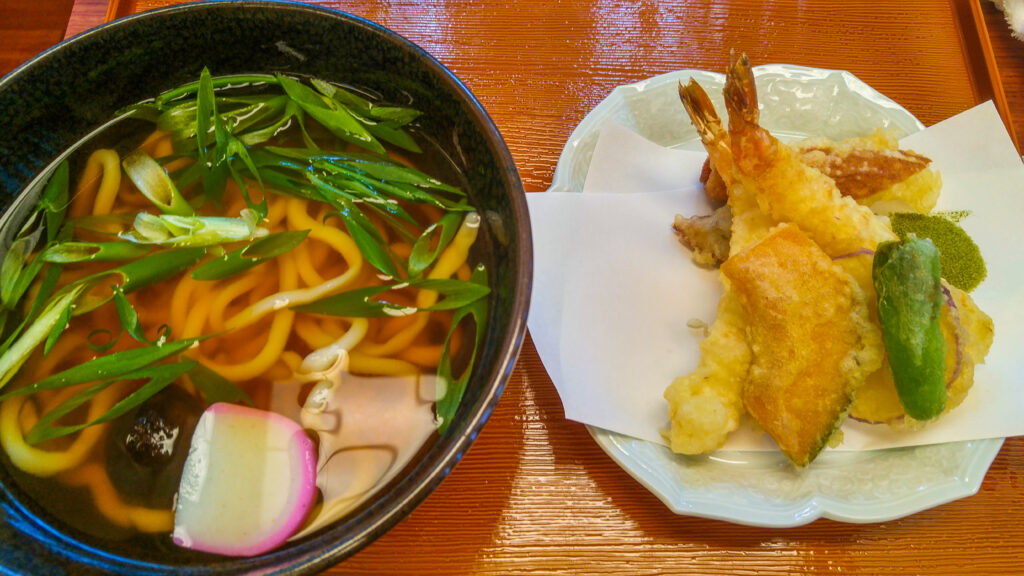
Dan ordered the Udon, and I decided to risk it on the cold soba noodles. I was surprised how much I liked the soba since cold food that is usually hot (i.e. pizza) isn’t my thing. But I loved this. We both got some tempura on the side and finished our meal with huge smiles on our faces.
After our delicious lunch, we wanted a sweet treat and since it was an unusually hot day, we thought it was the perfect weather for soft serve ice cream.
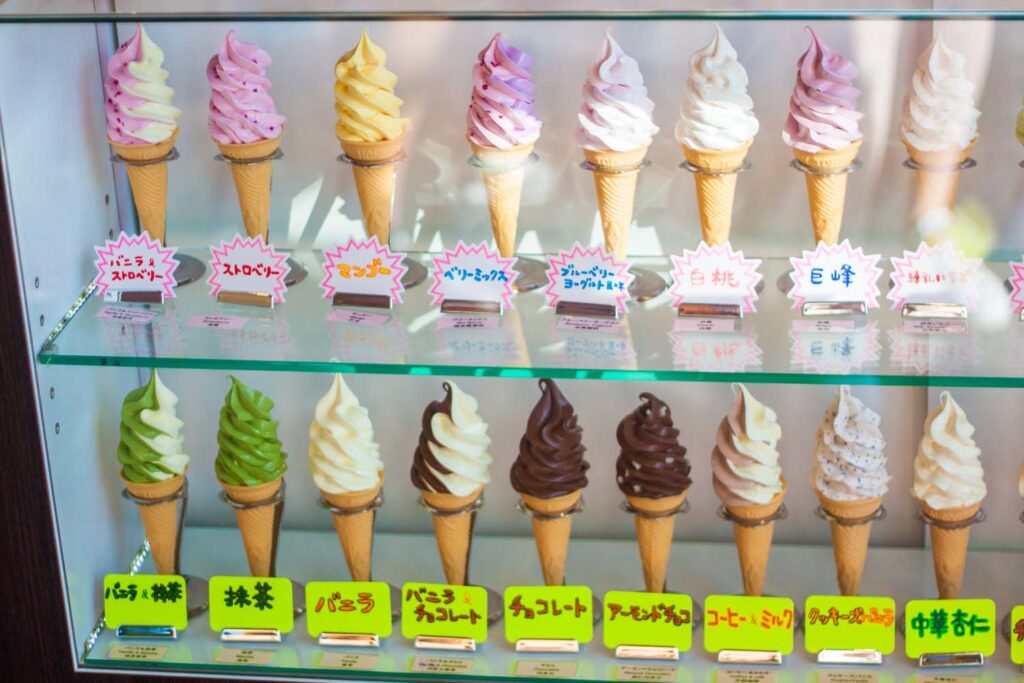
Soft serve ice cream in Japan isn’t just vanilla, chocolate or swirl. Every shop you’ll enter has dozens of flavours, often rotating with the season. We picked black sesame, a favourite flavour in Japan, and “Ramune”. Ramune is carbonated soda with a very light lemon lime flavour, and for some reason, it really works as ice cream!

Ice cream in hand we headed towards Otani Hombyo or the Otani Mausoleum. Before arriving at the temple, you must first cross the Entsu Bridge.
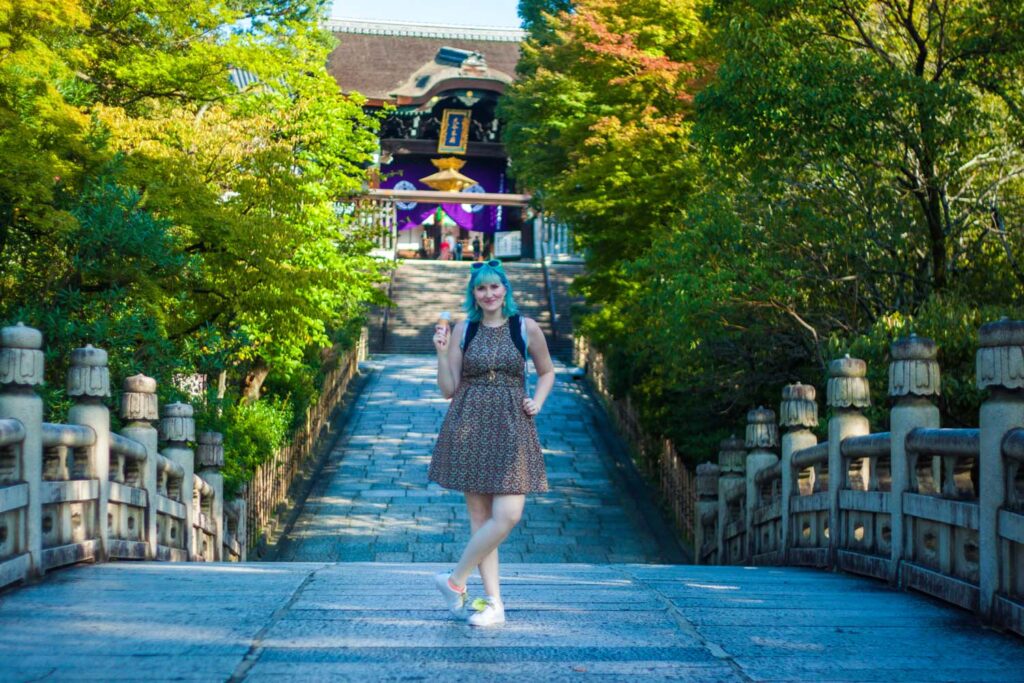
The tops of the parapets along the bridge are shaped like blooming lotus blossoms, as the lotus is a symbol of Jodo Shinshu, a sect of Buddism. They symbolise purity of the body.
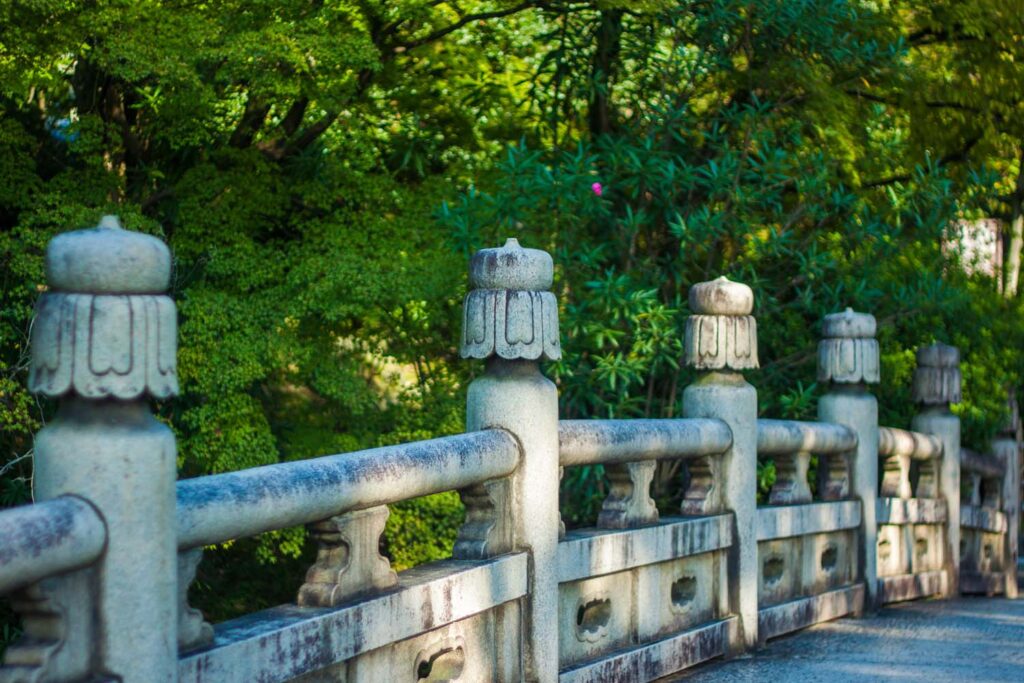
When we arrived, there were bright purple banners hung all over the temple. Purple in Buddism, symbolises oneness with God, peace and wisdom.
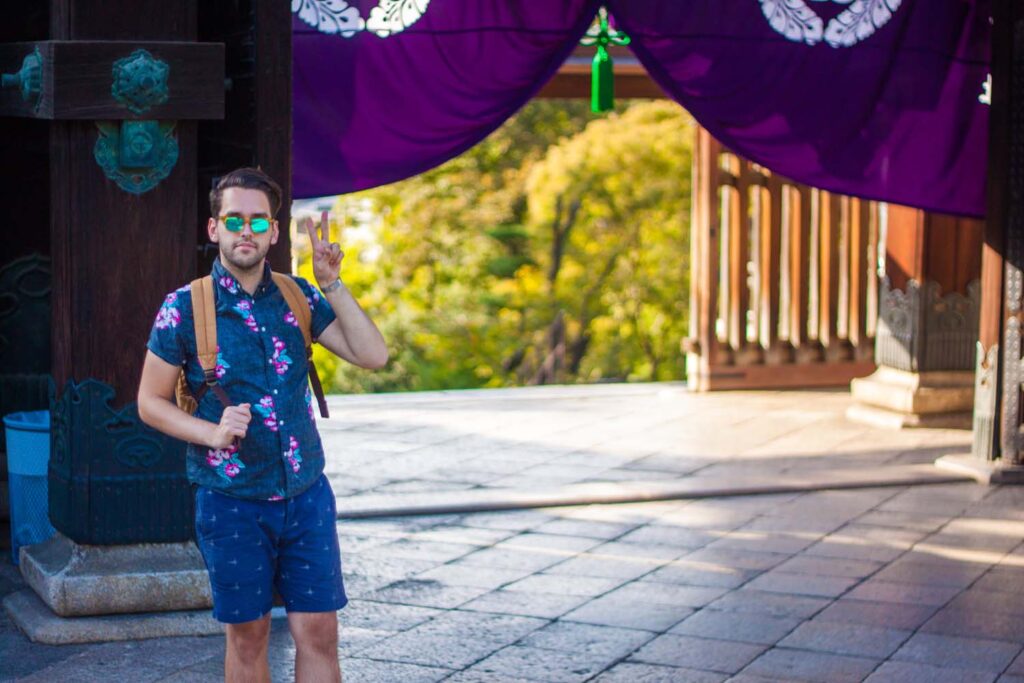
The Otani Mausoleum is where Shinran Shonin, the founder of Jodo Shinshu, is honoured. The temple was built in 1272 by Shinran Shonin’s eldest daughter, Kakushin-ni.
The main hall is dedicated to the Amida Buddha, the celestial Buddha of Pure Land Buddhism.
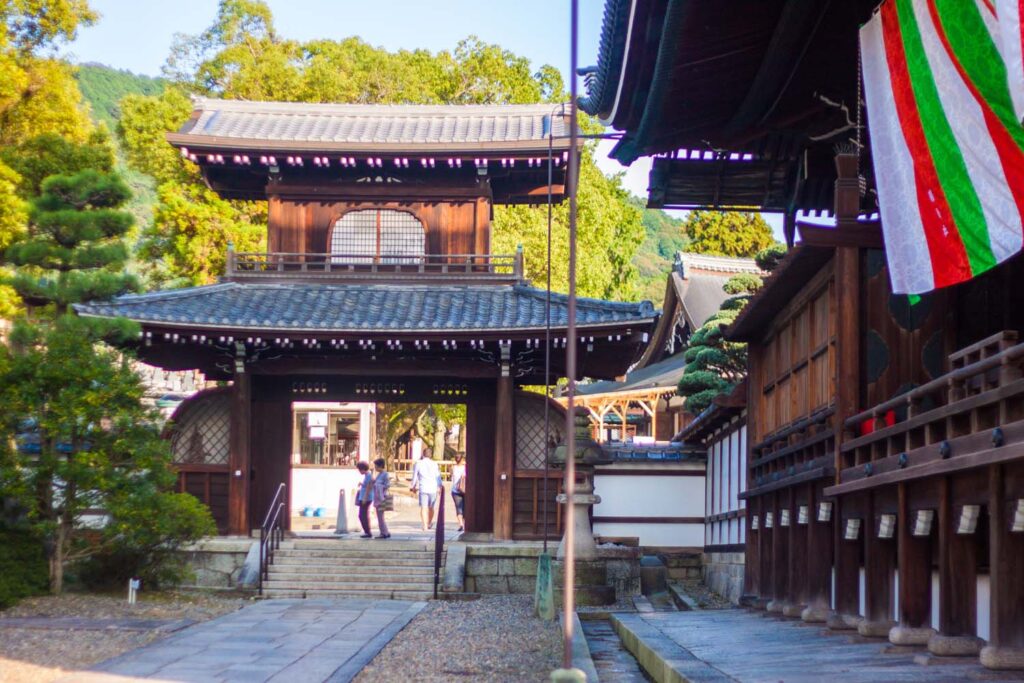
The Sodan, an octagonal building with thatched roof is the chapel which contains the founder’s cremated ashes. There is also a smaller chapel where the remains of important Jodo Shinshu Buddhists from around the world are housed.
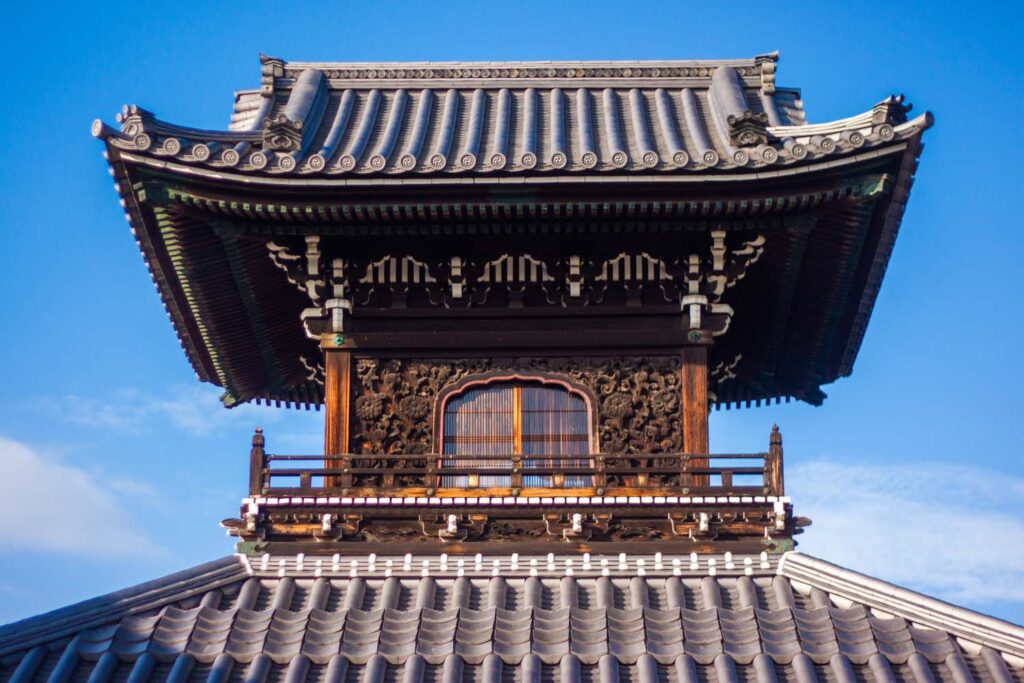
At the back of the temple grounds is the Meichodo or the Worship Hall.
Flowers are left regularly outside the hall as people come, not only praying for the memory of the founder, but also for any of their relatives who might be interred here as well.
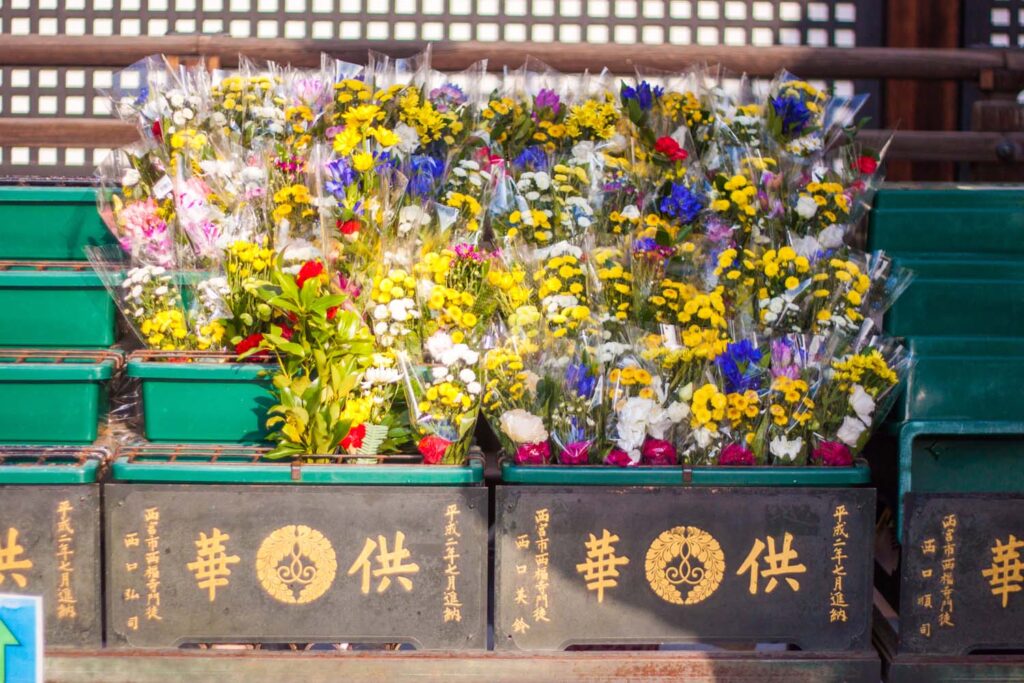
Built in 1709 this hall is 18 meters long but surprisingly, lacks any supporting pillars. Here, visitors and pilgrims, come to reflect on their own life, the life of Shinran Shonin and recite the “Nembutsu, Namu Amida Butsu”.
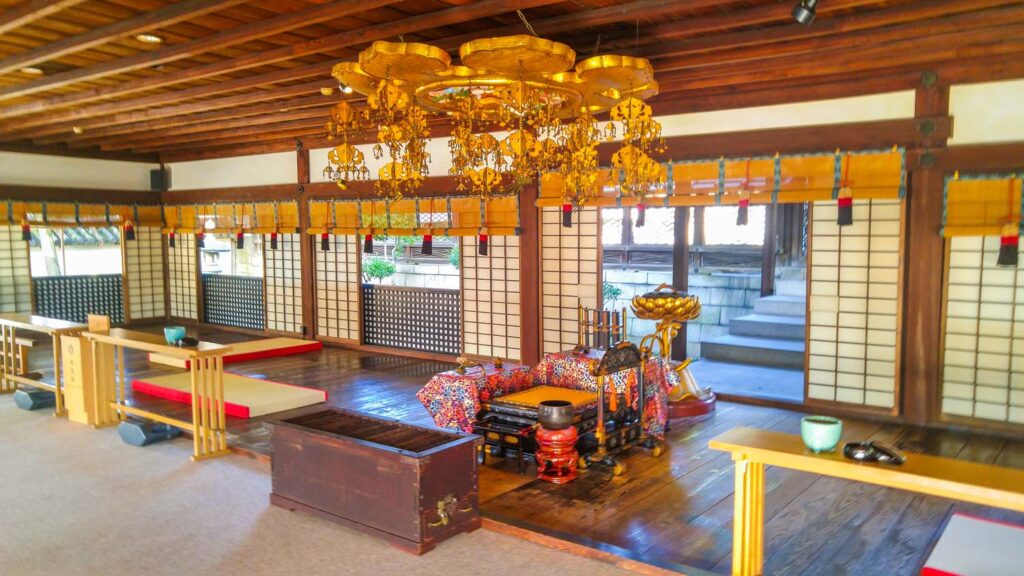
The Nembutsu, Namu Amida Butsu means “I follow/return back to Amida Buddha.” People have found peace and spiritual benefits from coming here to recite these words.
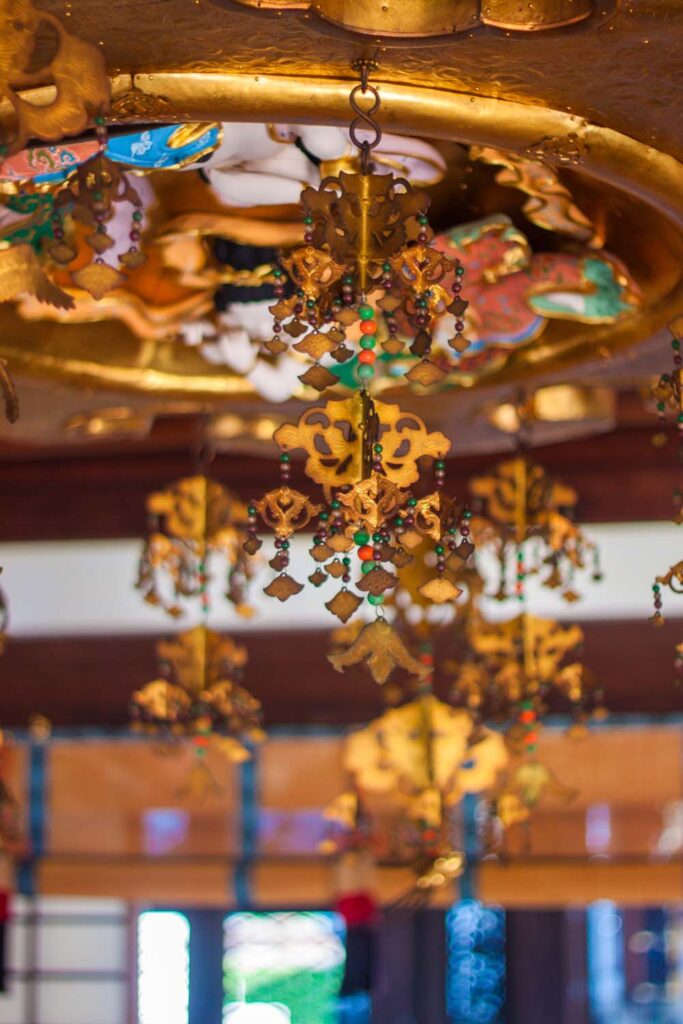
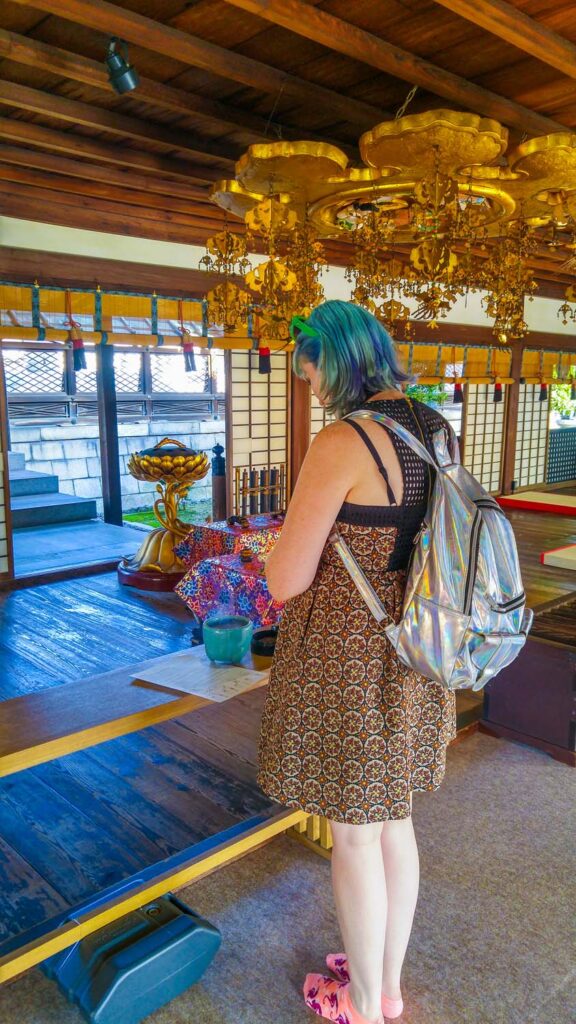
The priests at the temple were so kind and seeing as there was no one else there, they took me through the process of how to pray. They gave me a piece of incense to sprinkle on the burning coals. An offering to let the gods know I was there. Then I walked to the centre of the room where I clapped, pressed my palms together and recited those words. Despite not being a Buddhist, in the silence that overwhelmed the room, at that moment, I did feel an immense wave of calm wash over me as I closed my eyes. Participating in these kinds of practices, with an open heart, is an important part of learning about their culture and something you should give a try!
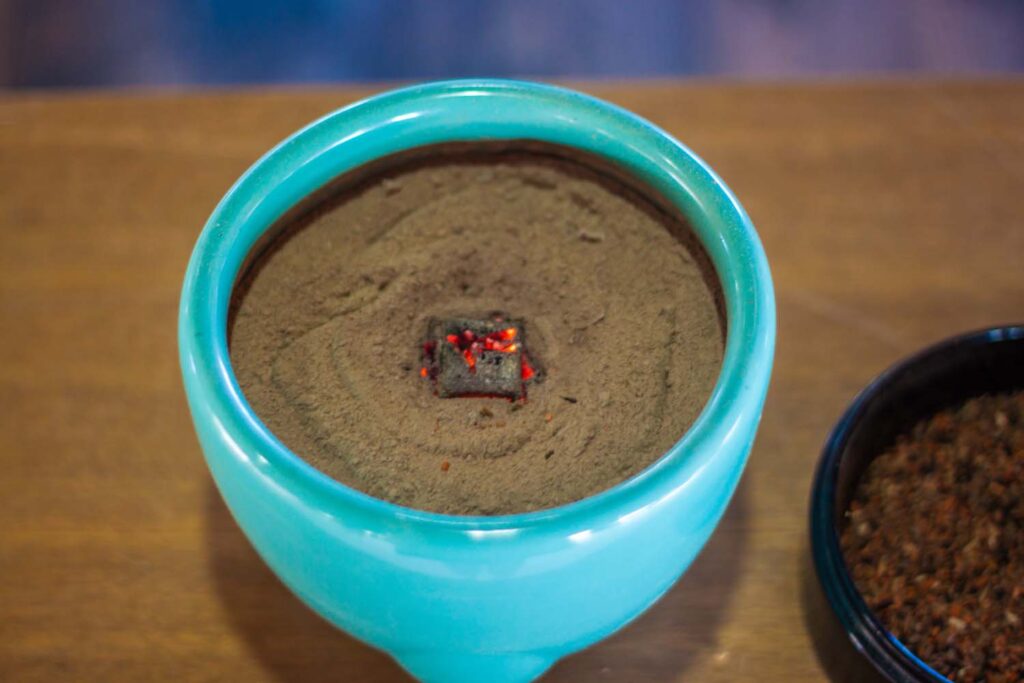
After praying in the great hall, we walked down the road parallel to the temple where you can catch a glimpse of the huge burial cemetery. It is one of the largest cemeteries in Kyoto, with over 15,000 tombstones dotting the hill over Kyoto.
Otani Honbyo is one of the quieter, less frequented shrines in Kyoto, and although it doesn’t’ have all the spectacle and shine of some other temples, it is a peaceful refuge from the city and worth wandering if you’re in the area.
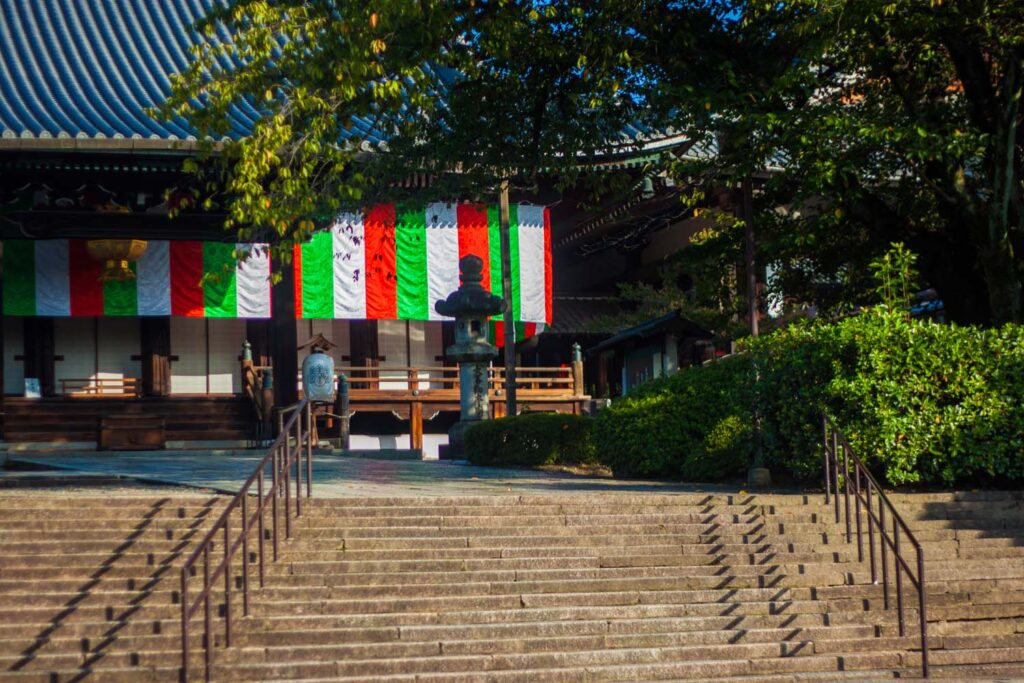


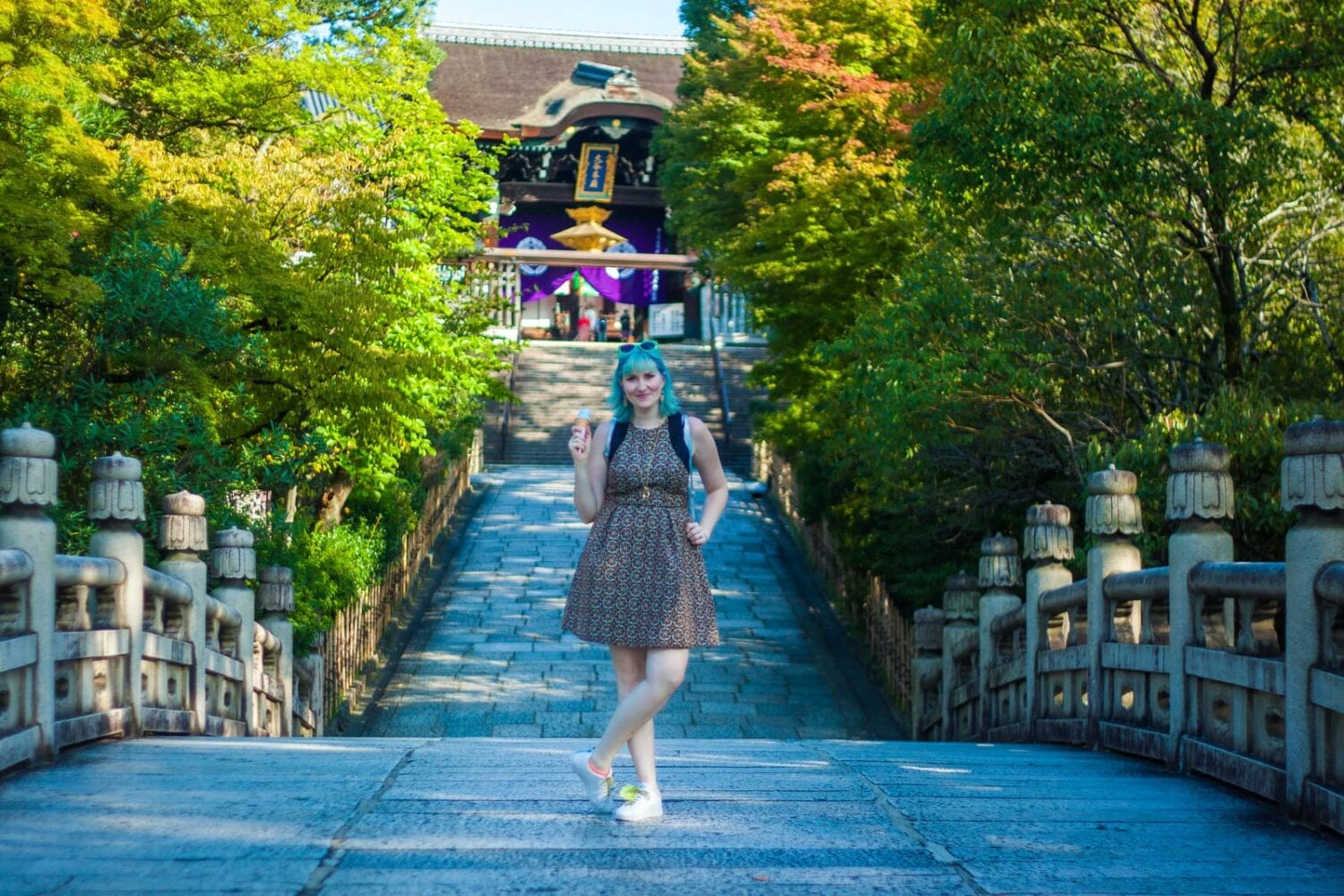

Leave a Comment